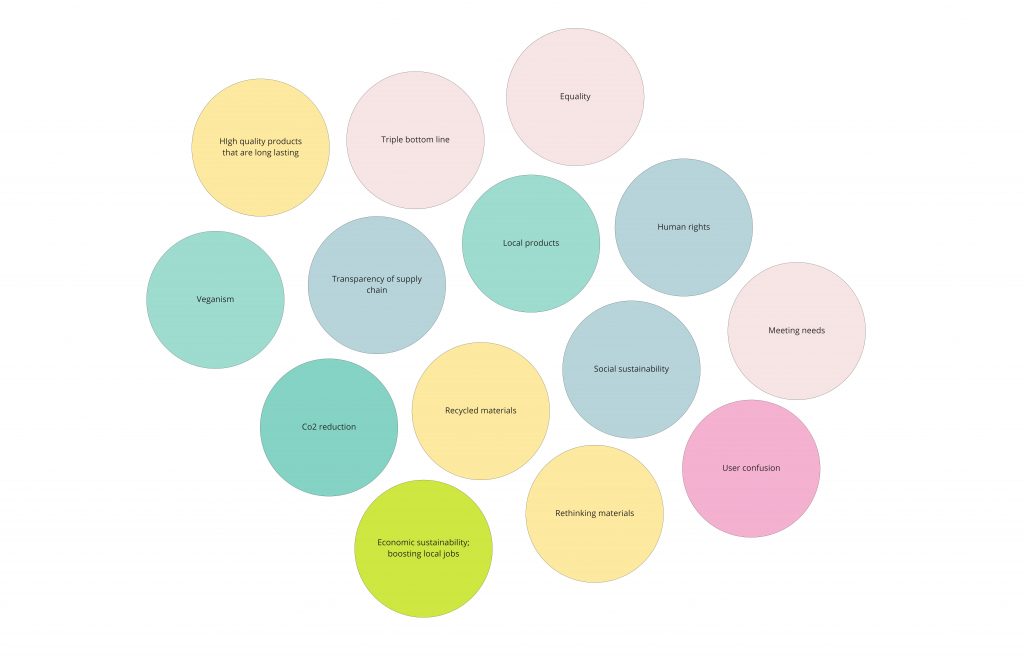These blog posts report on work-in-progress within the DfG course! The posts are written by groups dealing with the Ministry of Economic Affairs and Employment’s brief on ‘Reducing the carbon footprint of procurement services’.
—
Group 2B: Andre Helgestad, Nicole Grekov and Sara D’Angelo from the Creative Sustainability program and Shreya Shrivastava from the Collaborative and Industrial Design program.
Our group has chosen to focus on how to reframe or update the goals of the maternity box, from being a way to reduce child mortality to become a means of communicating and driving sustainability transitions in the public as well as in the textile industry. Today, buying clothes that are produced under fair labour conditions with sustainable materials is tough and to even consider the business model of the companies can be too much to ask from already stressed parents – maybe some professionals could help…
Although daunting at first sight, the EU directives on public procurement allow a variety of ways to perform innovative procurements, despite competition being mentioned 123 times; innovation 42 times; dialogue 37 times; and collaboration once(!).

This problem reframing did not arise out of thin air. The last couple of weeks has been especially dedicated to desktop research, interviews with 20 stakeholders (users, industry, procurement experts, consultancies, and public officials) and attempting to understand the process of public procurement. To understand the complexity involved in public procurement we have used generative design methods such as systems mapping and affinity diagrams and worked within the framework of leverage points to identify which aspects to focus on.
Tenderizing the tender
Our group has really been digging to find out exactly how a tender works, what it can do, what it cannot do and who works with it. You should know that there is a 2-year long process leading to the maternity box delivered in its entirety, and we have attempted to visualize this below.

What is sustainability, really?
“Sustainability is the possibility that humans and other life will flourish on Earth forever.”
– John R. Ehrenfeld
Most people are not sustainability experts, and thus their understanding of sustainability varies, probably even among sustainability experts too. We asked the question “what is sustainability for you?” in every interview and got very different answers. People have their own focus and mental models of what is sustainable, thus they (and we) might have distinct ways of approaching the subject.

Our interviews were very insightful, and I would like to thank those who participated and helped us understand public procurement from diverse perspectives. Additionally, those insights arose by probing the interviewees with the best practices in circular procurement and asking questions like “what is in the way of making this happen”, our group finally synthesized some barriers based on the insights.
Barriers:
Communication
- Constrained information flows and lack of efficient feedback and dialogue.
- Different understandings of sustainability.
Attitudes
- Fear of failure and repercussions like being sued in market court.
- Fixed process and box that is rooted in tradition.
- Equality for all trumps diverse needs.
- Linear thinking around product life cycle.
- Reducing unsustainability by measures – less CO2.
Opportunities:
Fortunately, there are many opportunities we have identified from interviews that could ensure procurement practices that encourage the development of innovative services.
- Elicit industry feedback and dialogue through drafting tender requests.
- Encourage circular business models and demand socially just production.
- Embrace niche innovations’ potential in the tender.
- Ensure intergovernmental collaboration for support.
- Educate end-users (parents) about product impacts and mitigation.
That sounds fine and all, everything starts with E’s to make it memorable as well, but how? We do not have the answer to that yet either, but we are hoping to find out in the next few weeks! Please click the hyperlinks if you are curious to understand more about how we arrived at our problem definitions.
Since we are not a tender and will not try to sell you anything, we can arrange workshops where you can figure out the opportunities that exist! If you see your organization in the systems map below– consider yourself a workshop candidate for how to make the maternity box the next best practice case in circular public procurement.
Systems map

—

